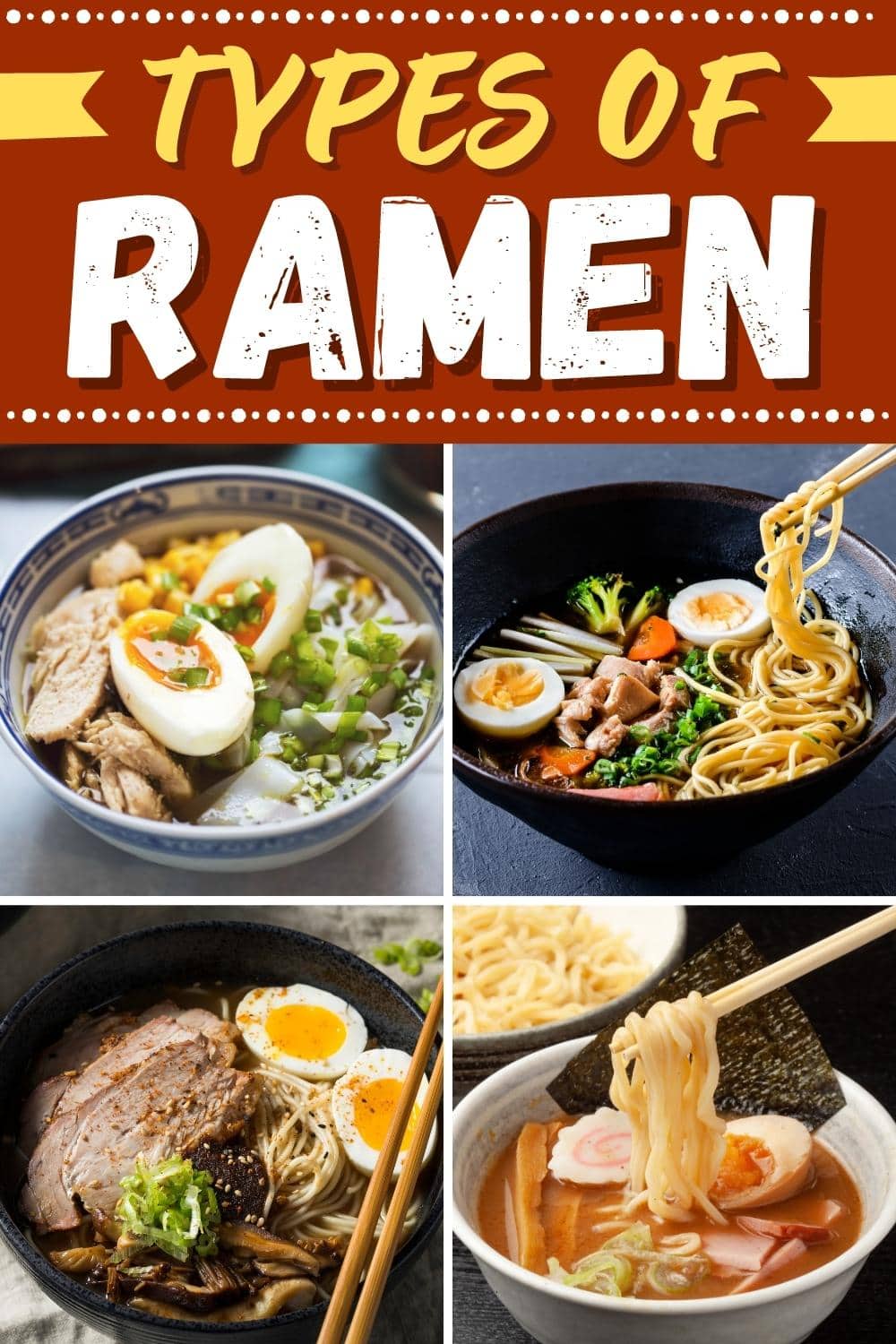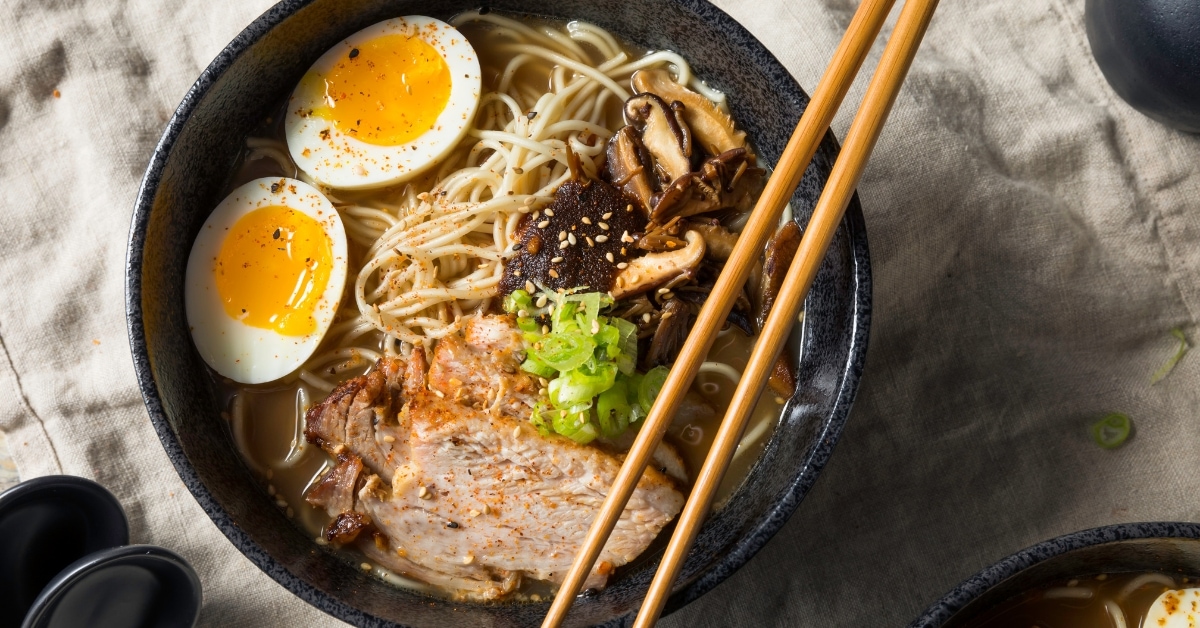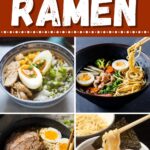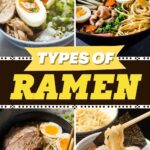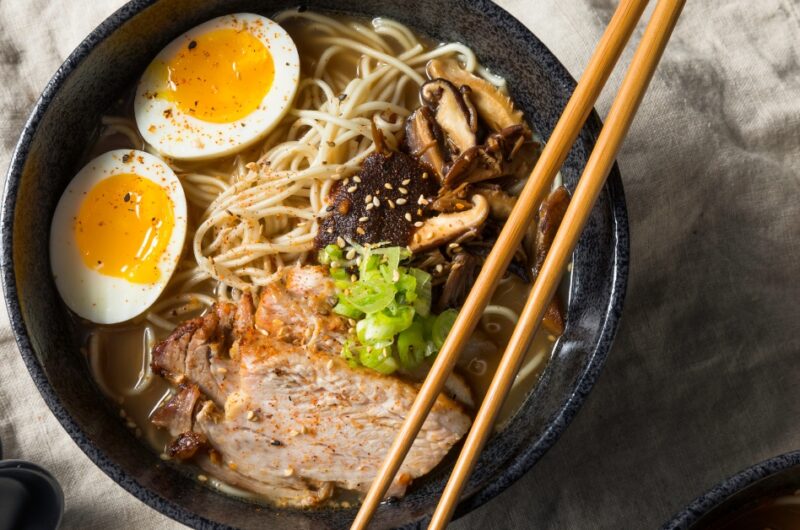There are so many different types of ramen, and each one is just delicious!
Ditch those store-bought ramen packets! Well, at least the flavor packets. The noodles can stay.
The types of ramen are just as diverse in Japan as pizza is in the United States.
There’s no end to the possibilities from different styles of broth, noodles, and toppings.

Whether you are on the hunt for the perfect bowl of ramen on your next trip to Japan or you want to make it at home, I have you covered.
Check out these different types of ramen below and ways to capture the classics without leaving your kitchen.
7 Main Types Of Ramen
Think that there’s only one type of ramen? Think again!
First, let’s start with the basics. There are seven different main types of ramen found throughout Japan.
These styles utilize different broth bases (like pork, miso, and soy sauce) and different kinds of noodles.
So, let’s first dive into the seven different types of ramen.
1. Shoyu Ramen
What makes shoyu ramen unique lies in the sauce.
It still has all the staples of a bone-warming bowl of ramen, such as bean sprouts, nori, and noodles.
The difference likes in that salty ramen broth!
Shoyu is the Japanese word for soy sauce. For the base of this shoyu broth, this ramen uses soy sauce with ginger, garlic, and scallions.
It’s salty, flavorful, and pairs well with all the toppings!
2. Tonkotsu Ramen
Tonkotsu ramen bursts with flavors in every bite thanks to an insanely hearty broth infused with pig bone.
It pairs a simmered pig bone broth with soy milk to create that classic milky white tonkotsu ramen base.
It’s rich and buttery, and lightly creamy.
Since this ramen is so decadently rich and hearty, opt for thinner noodles.
While any noodles work in a pinch, thin noodles ensure every bite bursts with rich flavors.
3. Kare Ramen
Kare ramen, aka curry ramen, is the fusion of planet Earth’s finest comfort foods: ramen and curry.
Unlike other broths that both a light base, kare ramen is thick and indulgent, like any good curry.
Japanese chicken curry, for instance, imparts many of the same ingredients as an Indian curry.
It infuses chicken, potatoes, and ginger with Japanese ingredients such as soy sauce.
It’s sweet, meaty, salty, and earns a slight sweetness from the honey.
4. Tsukemen Ramen
Japnese dipping noodles are the perfect solution when it’s just a little too hot for soup.
Tsukemen ramen is a cold dish where you dip your noodle in the broth before serving.
As we learned in that one strange episode of Portlandia, broth and noodles should never be mixed!
The broth of tsukemen ramen is rich and hearty, with a broth made from pork belly, mushrooms, sesame oil, and spicy doubanjiang.
It infuses all your favorite ramen toppings that take a quick dip in a hearty soup. It’s light, bright, and perfect for summer!
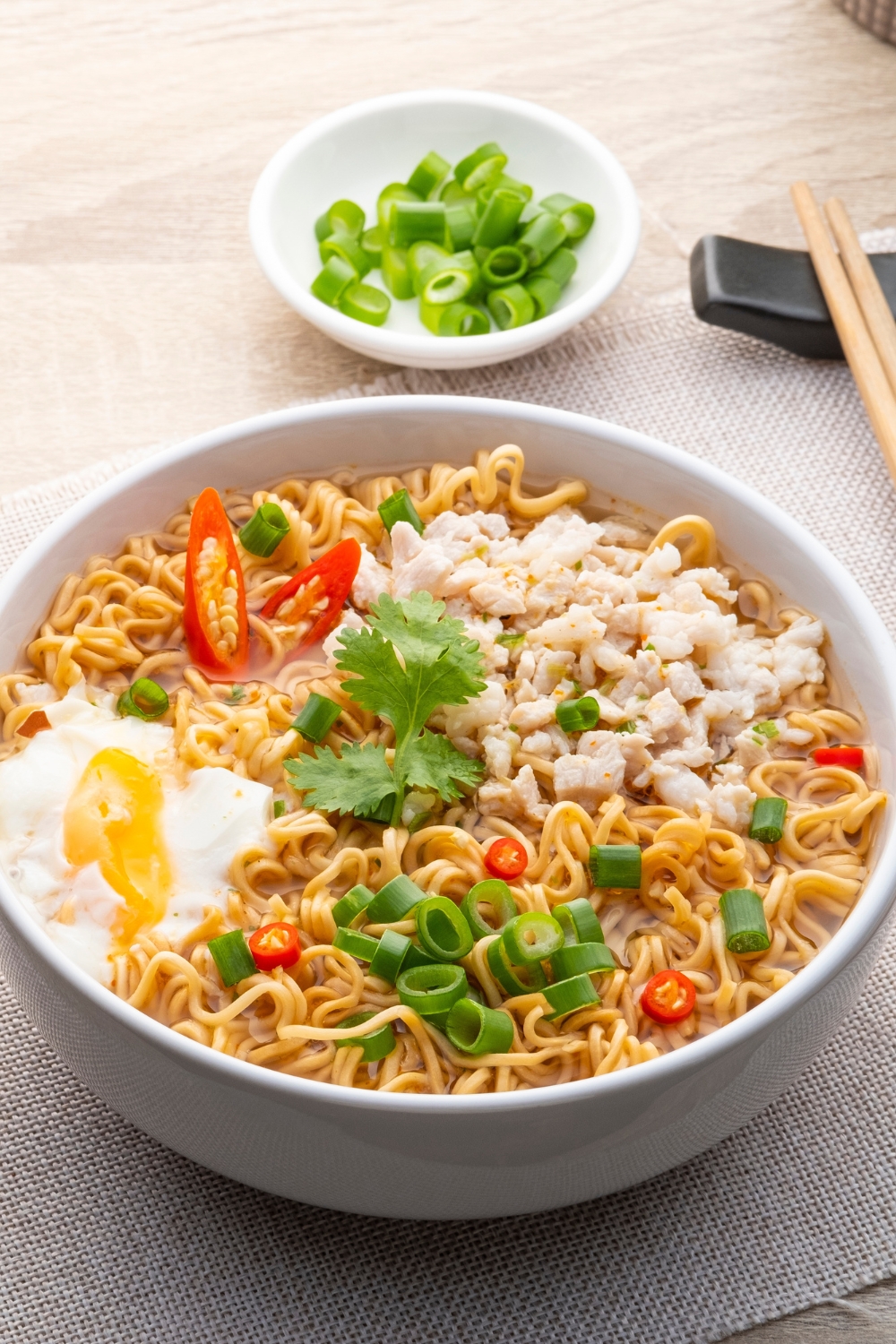
5. Instant Ramen
Instant ramen is a style that likely needs no introduction.
It was invented in 1958 when food shortages hit Japan.
A man named Momofuku Ando created cheap and affordable ramen packets.
Modern instant ramen packets pair dried noodles that cook in just 4 minutes with various seasoning packets.
Over the years, brands have reinvented instant ramen to include more upscale (but still affordable) options like instant Tonkotsu or chili lime chicken.
6. Miso Ramen
Miso ramen a staple at most local sushi restaurants. It pairs a salty and savory miso broth base full of umami flavors.
If you want the ultimate ramen comfort food, look no further than miso ramen.
Since the base of this ramen is so delicate, you can get creative with toppings.
There are no wrong answers from savory chicken or pork, earthy mushrooms, and sweet corn!
7. Shio Ramen
Shio ramen translates to salt ramen in Japanese. It boasts a light and salty broth with hints of briny flavors.
If you want to try homemade ramen, it doesn’t get much easier than this Hakodate classic.
The broth infuses sesame oil, ginger, mirin, sake, and salt. It earns its subtle briny flavors from a hint of dashi powder.
Simmer until it’s rich and flavorful, and serve with your favorite noodles and ramen toppings.
13 Regional Varieties Of Ramen
Now that we have established the seven different types of ramen, let’s take a quick peek at regional Japanese ramen dishes.
Various regions play on the seven main types of ramen and put their regional spin on the classics.
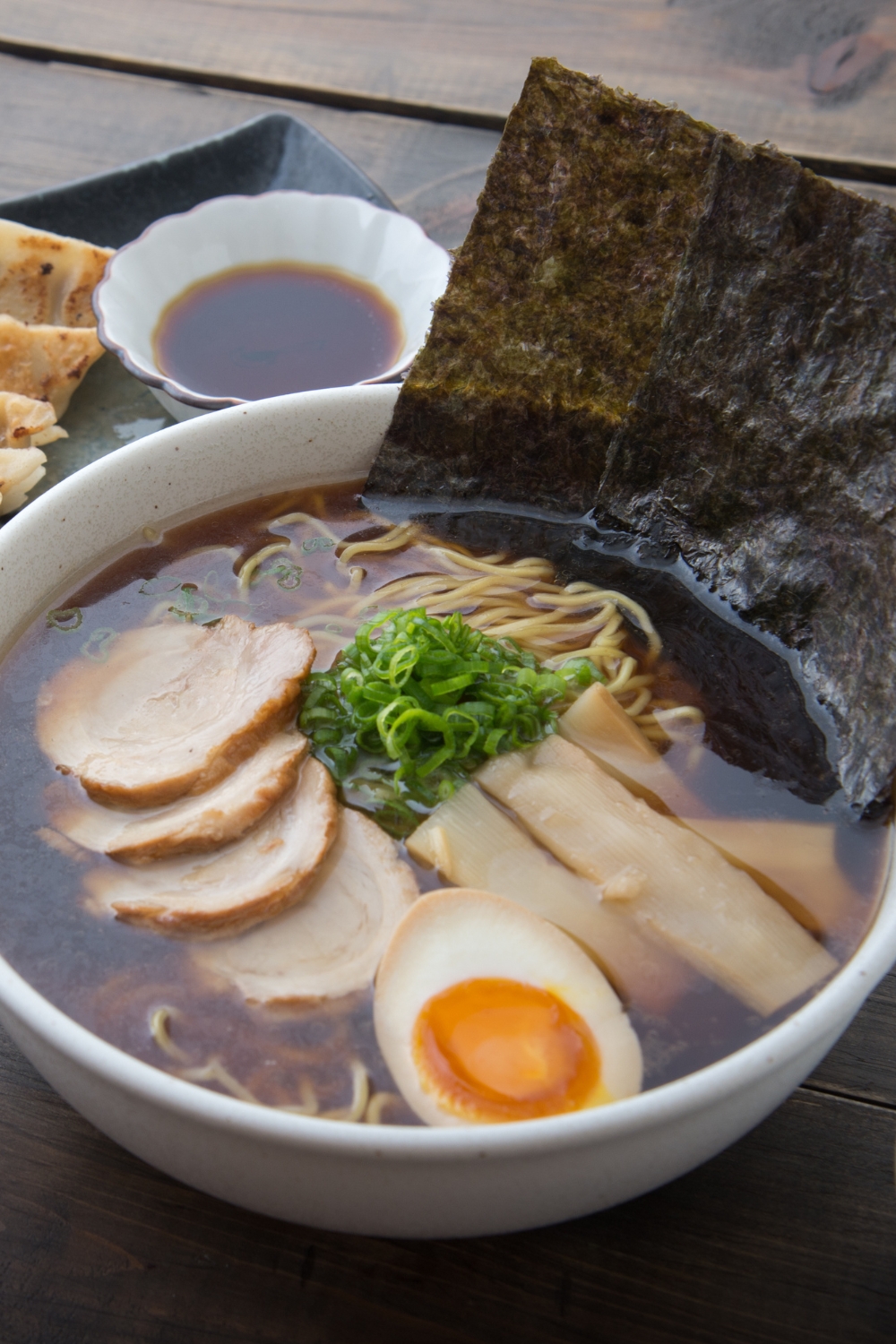
1. Tokyo-Style Ramen
The capital of Japan demands salty, savory, and flavorful ramen.
Classic Tokyo-style ramen infuses a meaty, buttery broth that infuses pork or chicken with dashi or bonito flakes for a massive umami hit.
While it’s composed of heavy flavors, Tokyo-style ramen is light and bright.
It’s very similar to Yokohama ramen, but you won’t need a mid-afternoon nap after inhaling a bowl of this delicious ramen.
2. Abura Soba
Abura soba is similar to soupless ramen. It pairs all the classic fixings of traditional ramen, like pork, egg, veggies, and nori.
But it includes a sauce instead of a broth.
The sauce in abura ramen, called tare, is rich and flavorful.
It combines sweet, salty, briny, and umami flavors that wrap around those glorious dipping noodles.
Instead of combining the tare and ramen toppings, they must stay separate!
Dip your noodles into the tare, and enjoy.
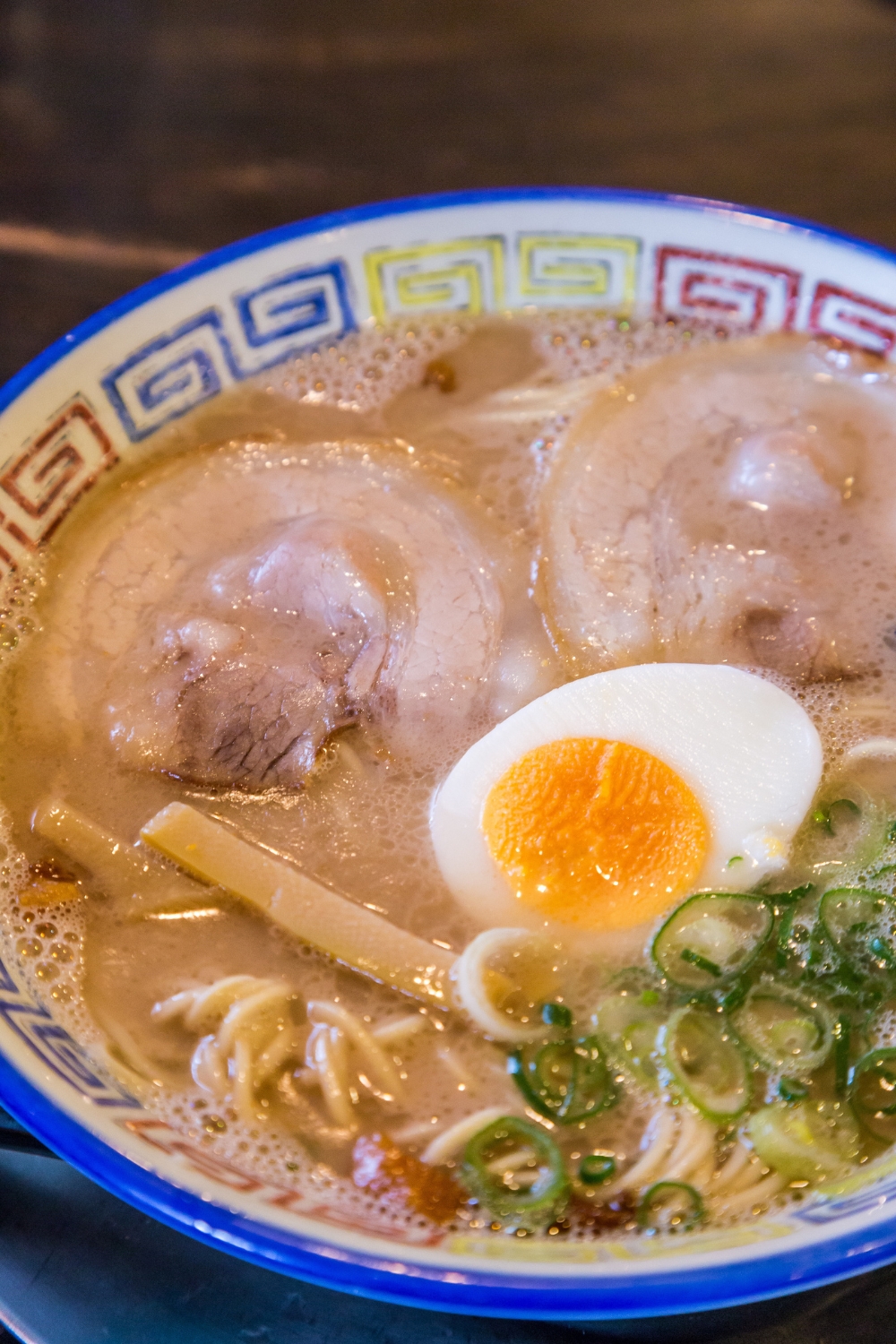
3. Kurume Ramen
Kurume ramen hails from Kurume City in northern Japan.
It’s a slight variation on the classically creamy tonkotsu ramen.
Winters in the north of Japan get pretty cold, and this hearty Kurume ramen will warm your icy bones.
This ramen is unique because while it’s similar to the creamy, meaty goodness of tonkatsu ramen, it’s slightly thicker and stew-like.
It goes perfectly with thick noodles and hearty ramen toppings like mushrooms, nori, and pork.
4. Okinawa Soba
Okinawa soba doesn’t utilize soba (buckwheat) noodles despite its name.
What makes Okinawa ramen unique is that it uses a very special style of noodles.
While most ramens differ by broth, Okinawa soba changes things up with the noodles.
The noodles in Okinawa soba are incredibly chewy and satisfying and made from a simple mixture of flour, water, and egg.
The broth is rich and meaty thanks to katsuo dashi and pork broth.
While rich and flavorful, it’s a surprisingly light, clear broth.
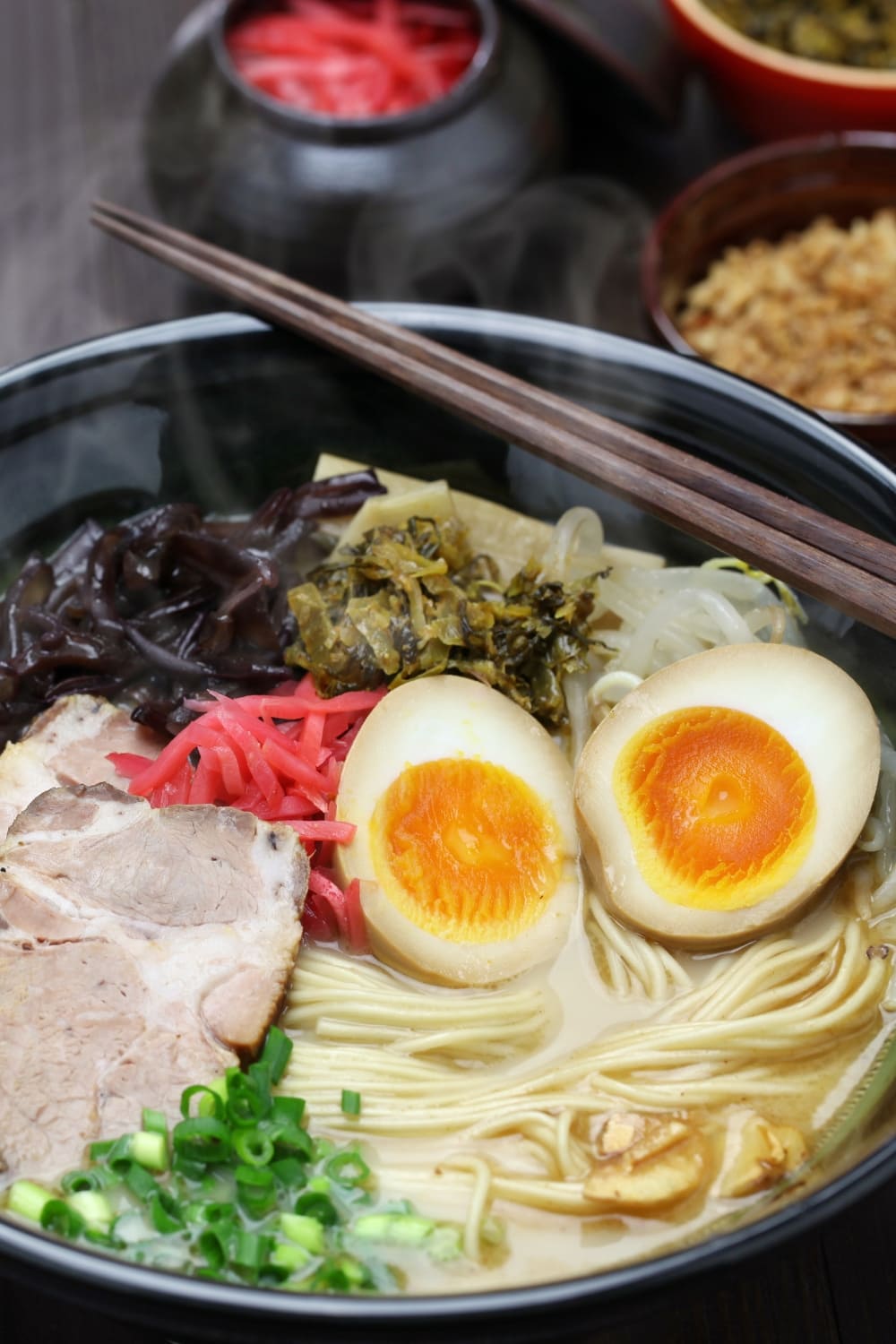
5. Hakata Ramen
On the hunt for insanely rich and dense ramen?
If you can also set aside time for a nap after mealtime, Hakata ramen is worth checking out.
So, what makes it so impossibly rich and indulgent? The broth of this style of ramen is similar to tonkatsu ramen.
The two types of ramen hail from similar areas, but Hakata ramen takes this meaty, creamy ramen to new heights.
It’s thick, meaty, creamy, and exposed with rich, garlicky, and umami flavors.

6. Hakodate Ramen
Three types of ramen hail from Hokkaido, and Hakodate ramen is one of them.
Shio ramen (or salt ramen) is famous in this region, and Hakodate ramen is a spin on a classic. It’s light, bright, and so very salty.
Compared to the other two types of Hokkaido ramen, Hakodate ramen is lighter.
It boasts a clear salty soup base with delicate noodles and light additions like scallions and nori.
It’s a great soup that satisfies your appetite but doesn’t sit heavily in your stomach.
7. Kagoshima Ramen
This style of ramen is very similar to the creamy, meaty notes of tonkotsu, but it’s just a little bit lighter.
It pairs a creamy meat-based broth composed of chicken stock (instead of pork) and milk.
Traditional Kagoshima ramen utilizes thicker noodles that soak up all that deciduous sauce.
The toppings of this ramen are a little different, too.
It incorporates toppings like toasted garlic, wood ear fungus, and bean sprouts.
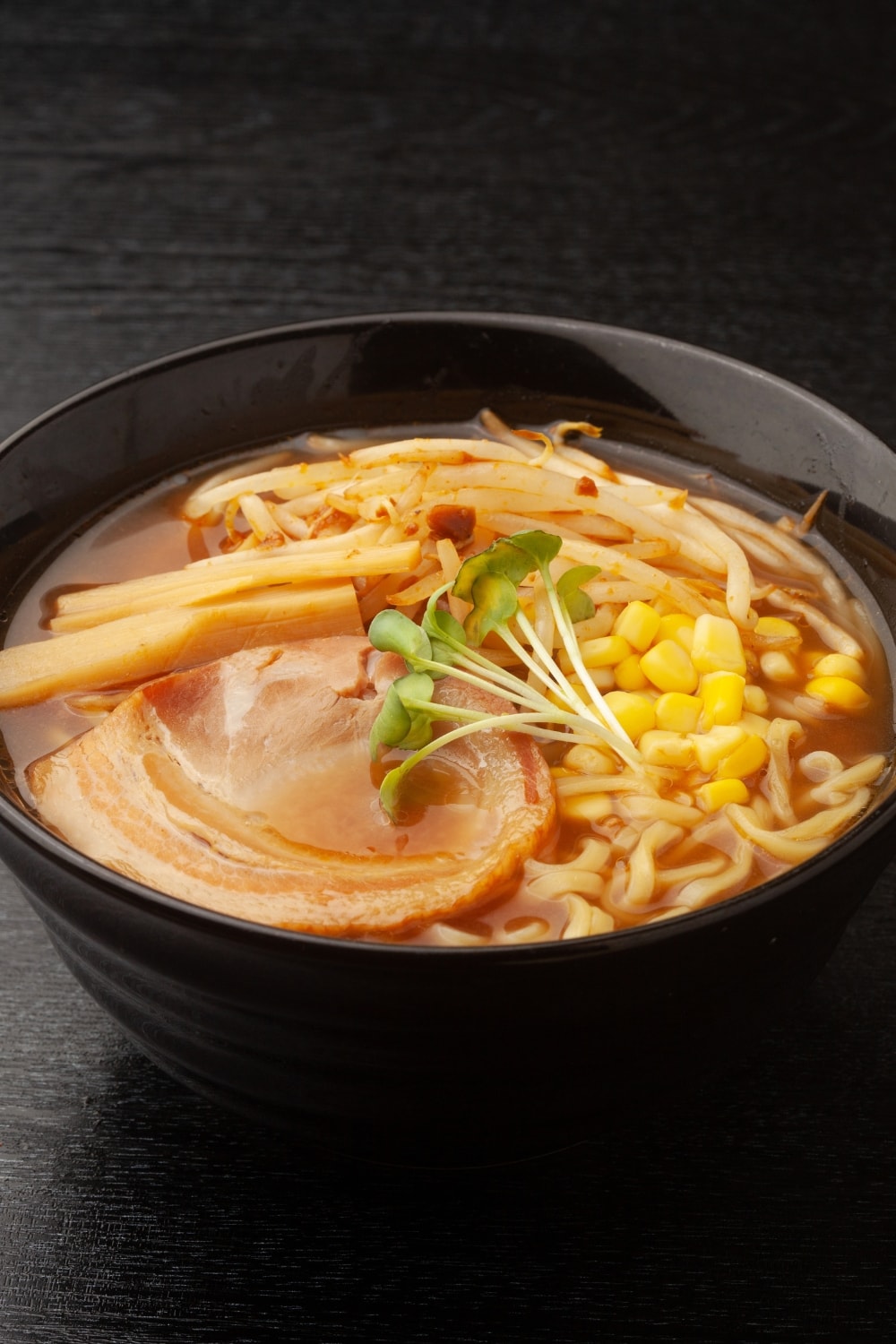
8. Sapporo Ramen
Are you in love with miso ramen? Sapporo, found within Hokkaido, is where miso ramen was born.
If anyone knows their miso ramen, it’s the town of Sapporo!
The miso broth base steals the show in this ramen style. It’s light and clear and boasts very subtle flavors.
It also infuses delicious toppings like scallions, bean sprouts, and pork.
This ramen pairs with wavy noodles that pick up that rich sauce like a dream. It’s a must-have when venturing to Sapporo.
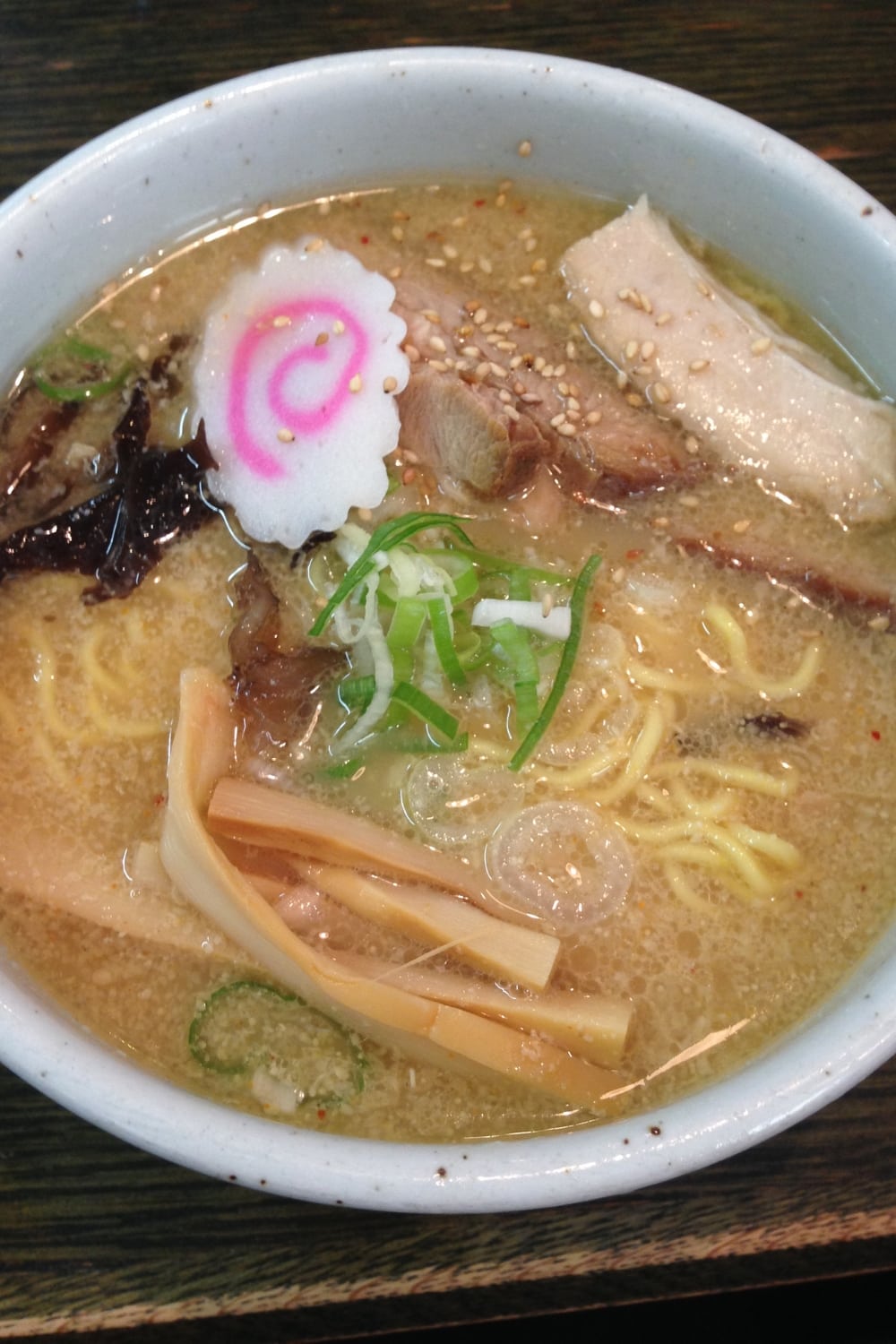
9. Asahikawa Ramen
Asahikawa ramen is unlike any other ramen in Japan.
It boasts a very dark soup base infused with soy sauce that gives it it’s unique dark coloring.
It’s a shoyu (or soy sauce) style of ramen that doesn’t shy away from bold flavors.
One of its leading characteristics is that it’s pretty oily. It’s so oily that a layer of oil often glistens on this incredibly indulgent ramen.
The ramen base is flavorful and so very salty.
It’s often paired with equally indulgent toppings like pork, green onions, bamboo shoots, and eggs.
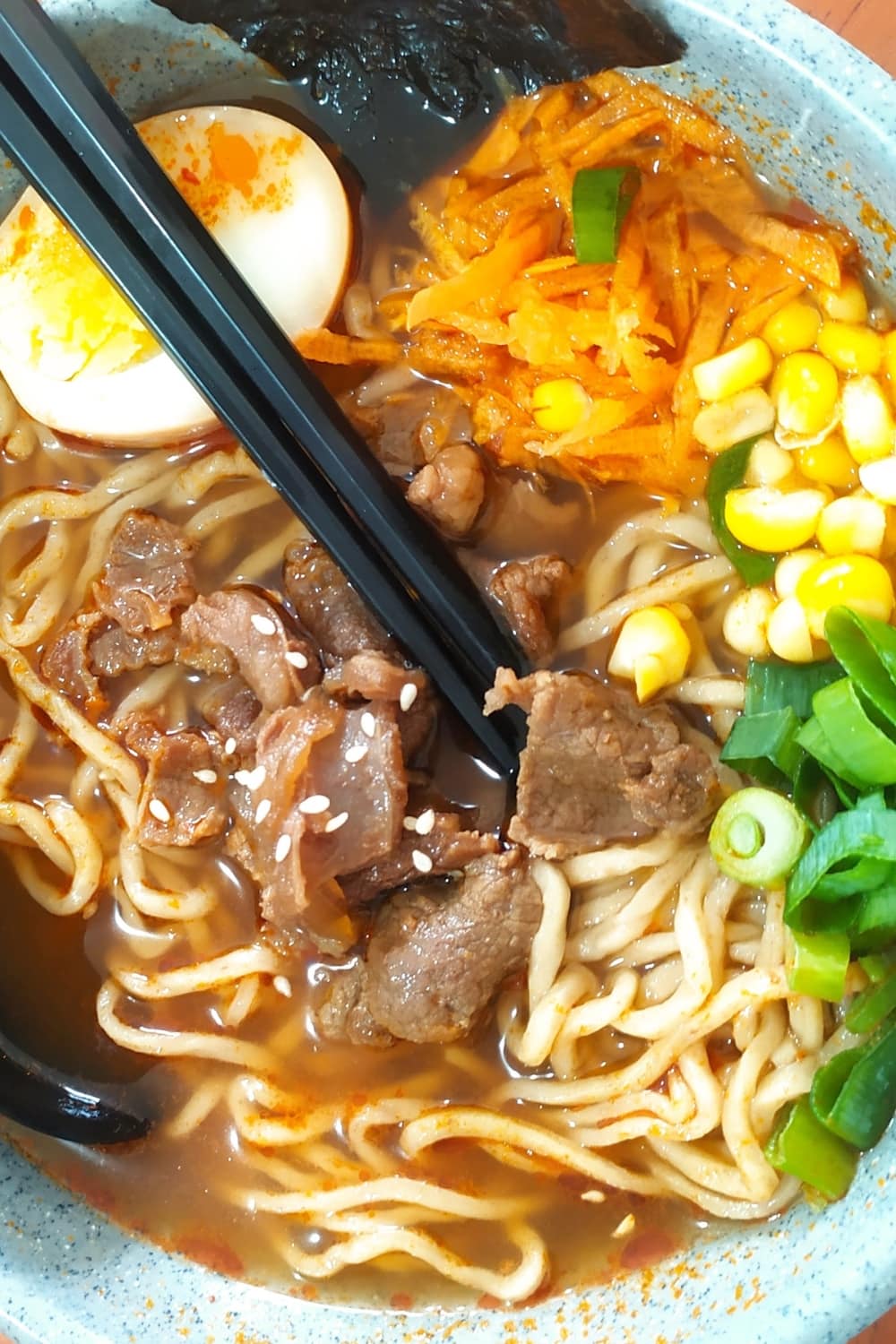
10. Chuka Soba
Chuka soba is Japanese-style Chinese noodles.
Chuka soba gained popularity after the second world war and tastes like Japanese-style egg noodles.
They’re incredibly chewy, savory, and excellent at soaking up all that rich ramen sauce.
Their ability to soak up rich sauces makes them great for traditional hot ramen.
But they’re even better in cold dishes like Tsukemen (Japanese dipping noodles).
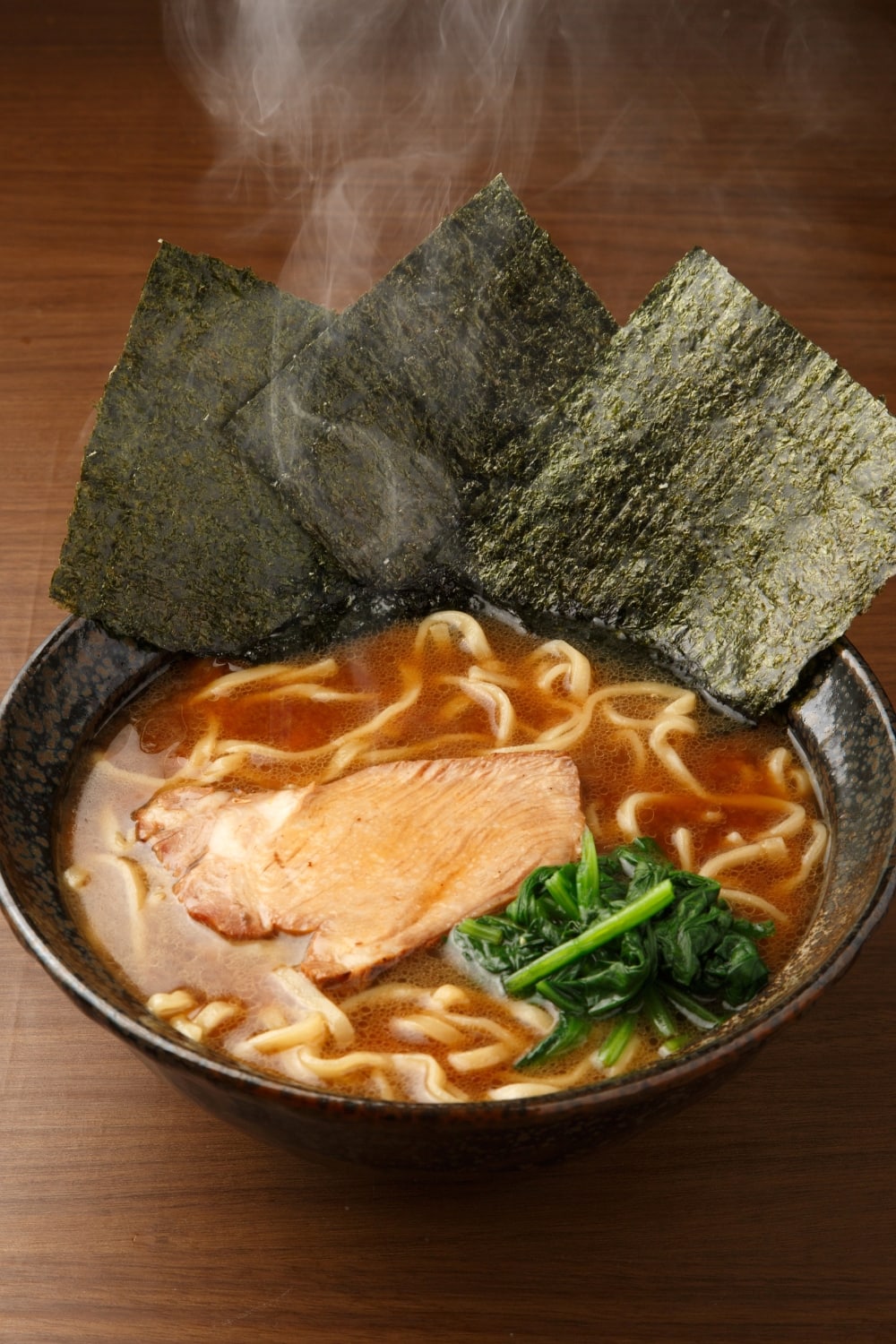
11. Yokohama Ramen
Yokohama ramen is a fusion of tonkotsu and shoyu ramen.
The soup base is rich and meaty thanks to pork bone with a delightfully salty kick from soy sauce.
If that wasn’t indulgent enough for you, it adds a layer of chicken oil.
The Yokohama ramen fusion is just as polarizing in Japan as Hawaiian pizza in the US. The bold flavors of this ramen are pretty divisive.
While some love the explosion of flavors from blending two styles of ramen, others aren’t a fan.

12. Wakayama Ramen
This style of ramen is trendy in the Northern sections of Wakayama prefecture. It’s also sometimes referred to as Chinese noodles.
While the pork and chicken base with an infusion of soy sauce (or shoyu) is insanely delicious, they take a back seat to Wakayama noodles.
These noodles are very similar to Chinese-style egg noodles.
They’re much thicker than your average ramen noodle and are delightfully chewy and delicious.
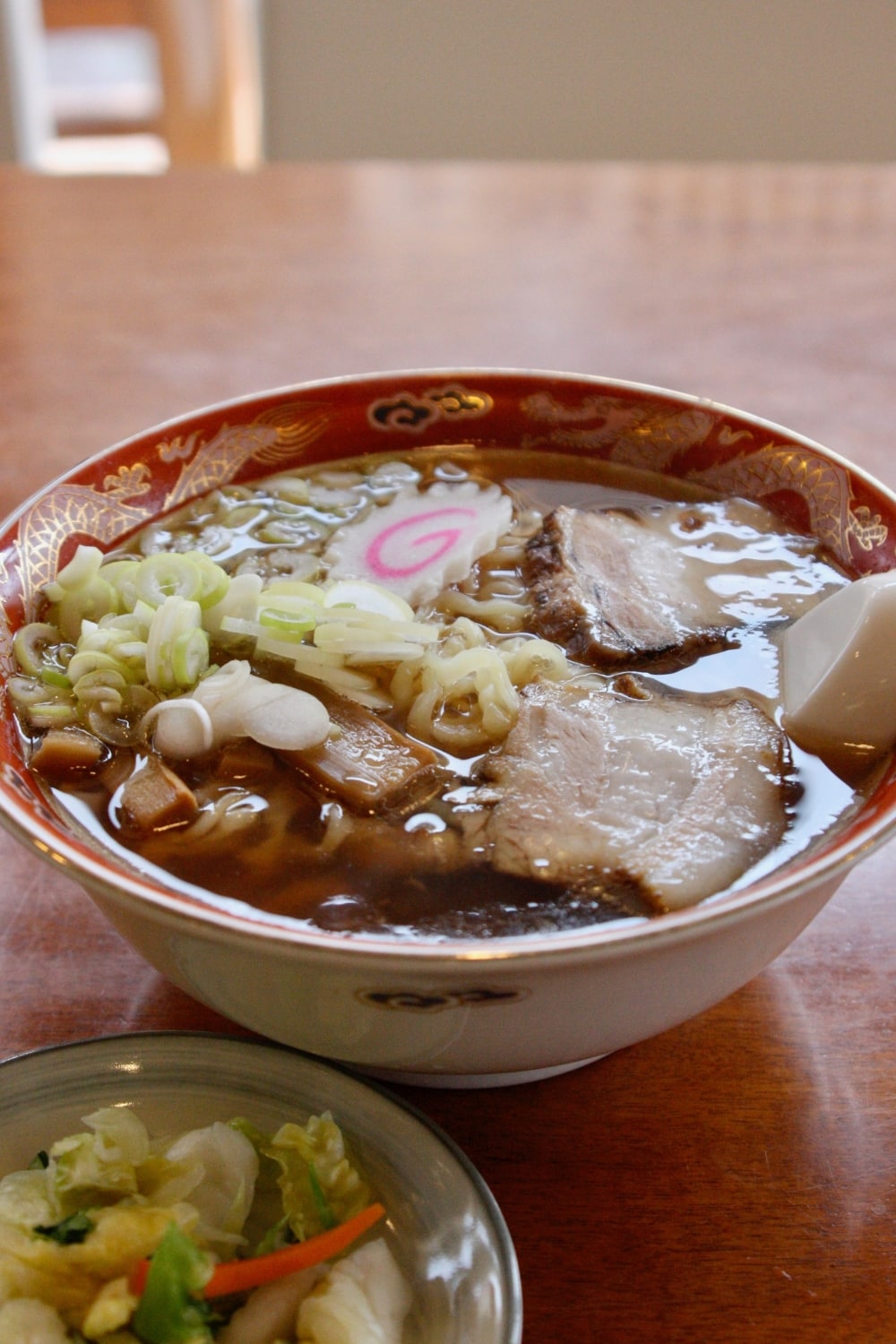
13. Kitakata Ramen
Kitakata ramen is just as delicious as it is fun to say.
Go on, say it out loud: ki-ta-ka-ta!
It’s one of Japan’s most popular regional styles of ramen, rivaled only by Hakata and Sapporo ramen.
It utilizes a salty shoyu (soy sauce base) that is savory and so very delicious.
The base is so flavorful that it often accompanies simple toppings such as scallions, pork, fish cakes, and bamboo shoots.
It’s a simple ramen dish, but when done right, it’s magical.
Ramen Toppings
1. Soft-Boiled Eggs. Soft boiled eggs are one of the most popular ramen toppings. When that runny yolk hits the salty ramen base, it’s a thing of magic.
2. Green Onions / Leeks. Most ramen tends to be rich and savory, so adding onions adds a pop of herbal brightness.
3. Sesame Seeds. Sesame seeds are a great way to add a nutty crunch to your ramen. I sometimes like to add a drizzle of sesame oil on top for a double punch of rich, nutty flavor.
4. Nori. Nori is dried seaweed found in sushi. Adding a sheet of dried nori to a steaming bowl of ramen provides rich umami flavors and an added crunch.
5. Shiitake Mushrooms. If you’re in a pinch, any style of mushrooms adds an earthy, meaty bite. Shiitake mushrooms, however, are worth the extra cost because they yield slightly smoky flavors to your ramen.
6. Chashu. What to take your ramen over the top? Chashu is tender cuts of pork belly marinated in rich Japanese flavors like ginger, garlic, and mirin.
7. Bean Sprouts. Adding bean sprouts adds a delicious crunch and earthy flavors to ramen. Bonus points: they stay nice and crisp, even after simmering in hot broth.
8. Kamaboko. You know those little white and pink wheels on top of ramen that look like candy? That’s kamaboko (aka fish cakes).
It’s mild, slightly sweet (like crab meat), and is the cherry on top of your ramen sundae!
